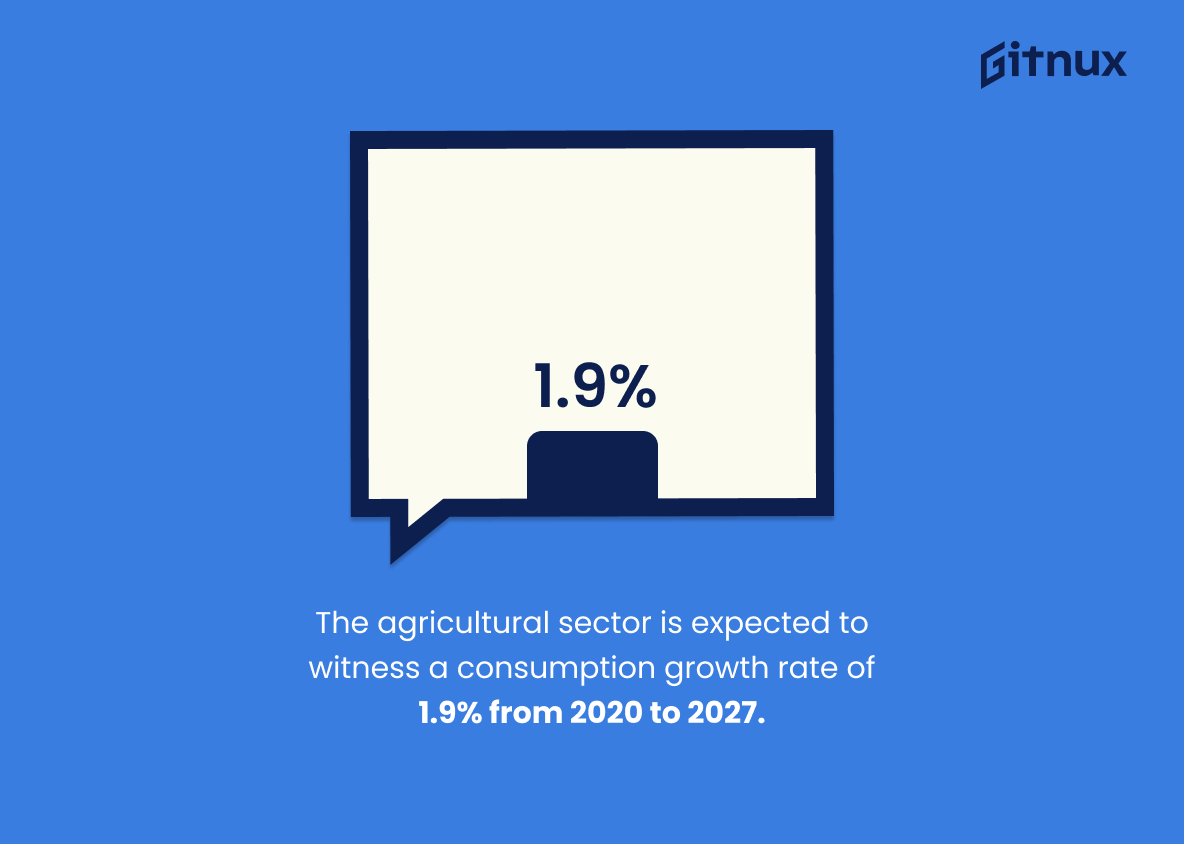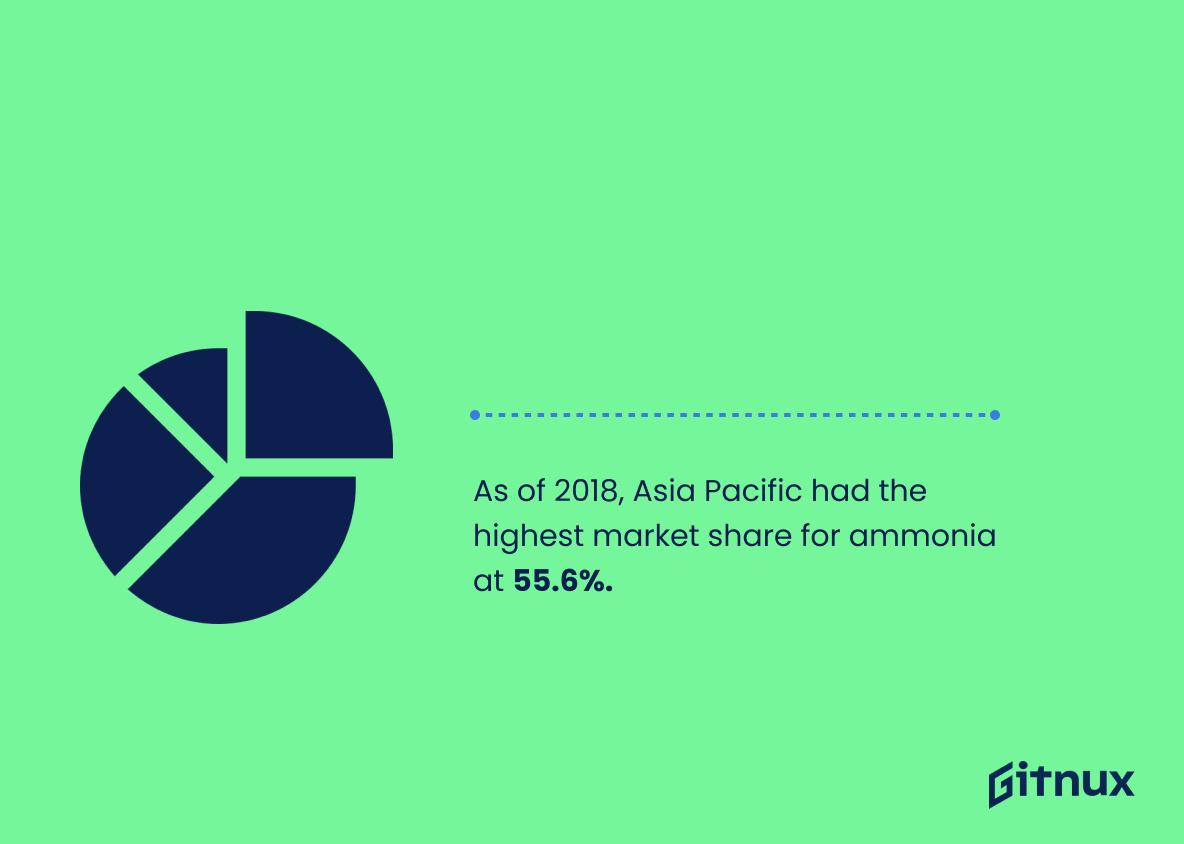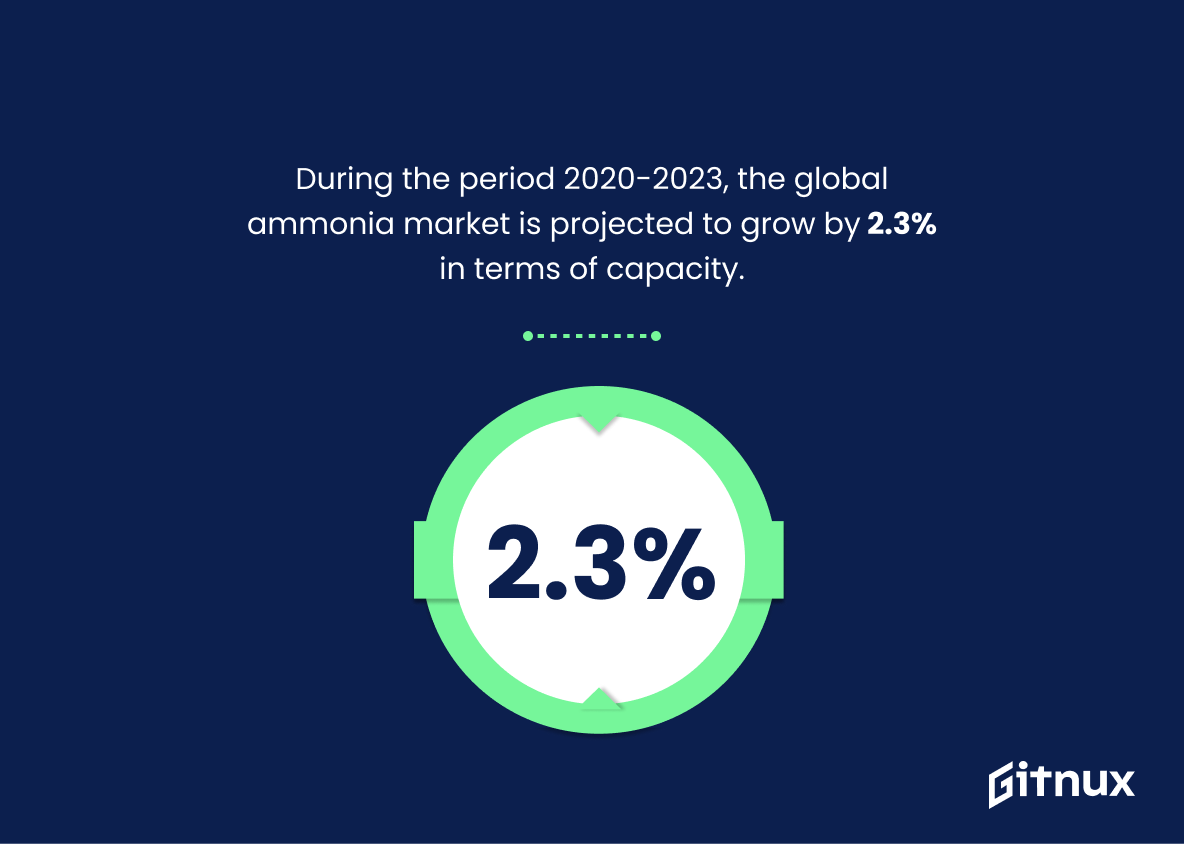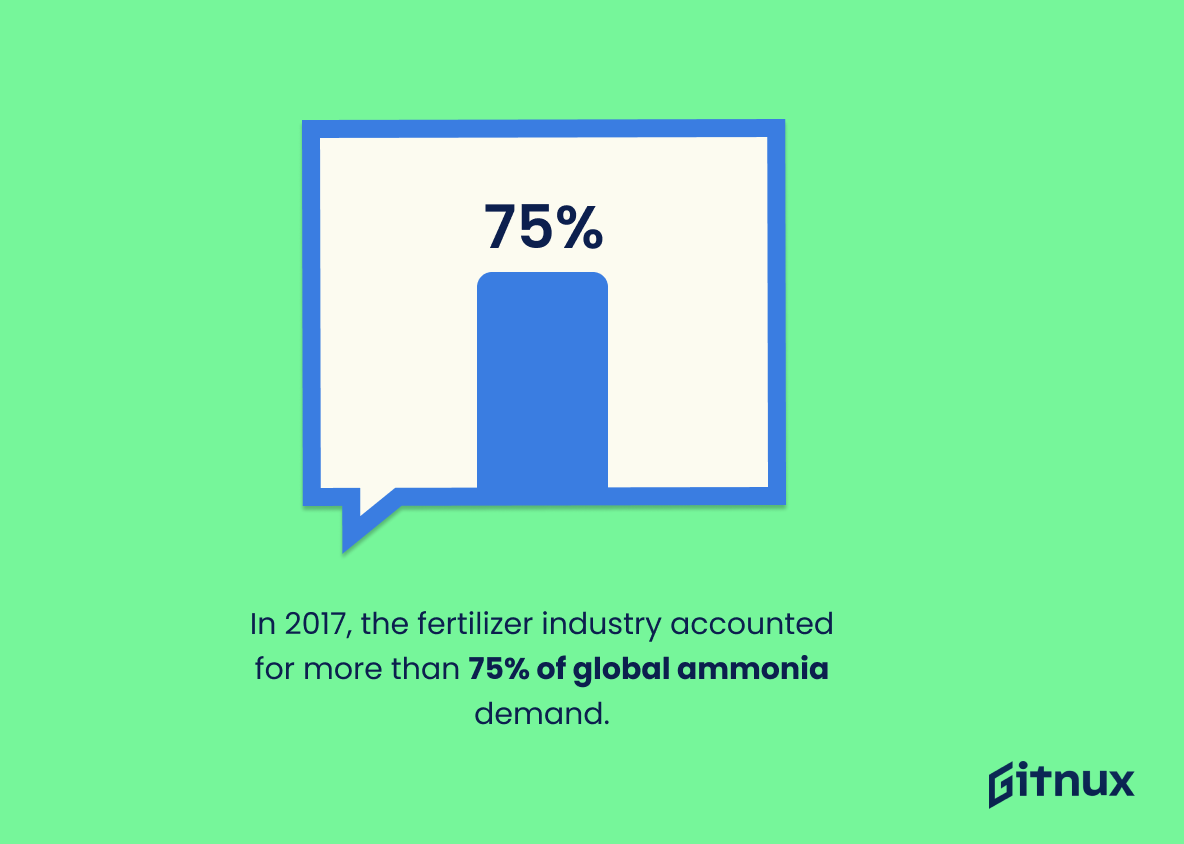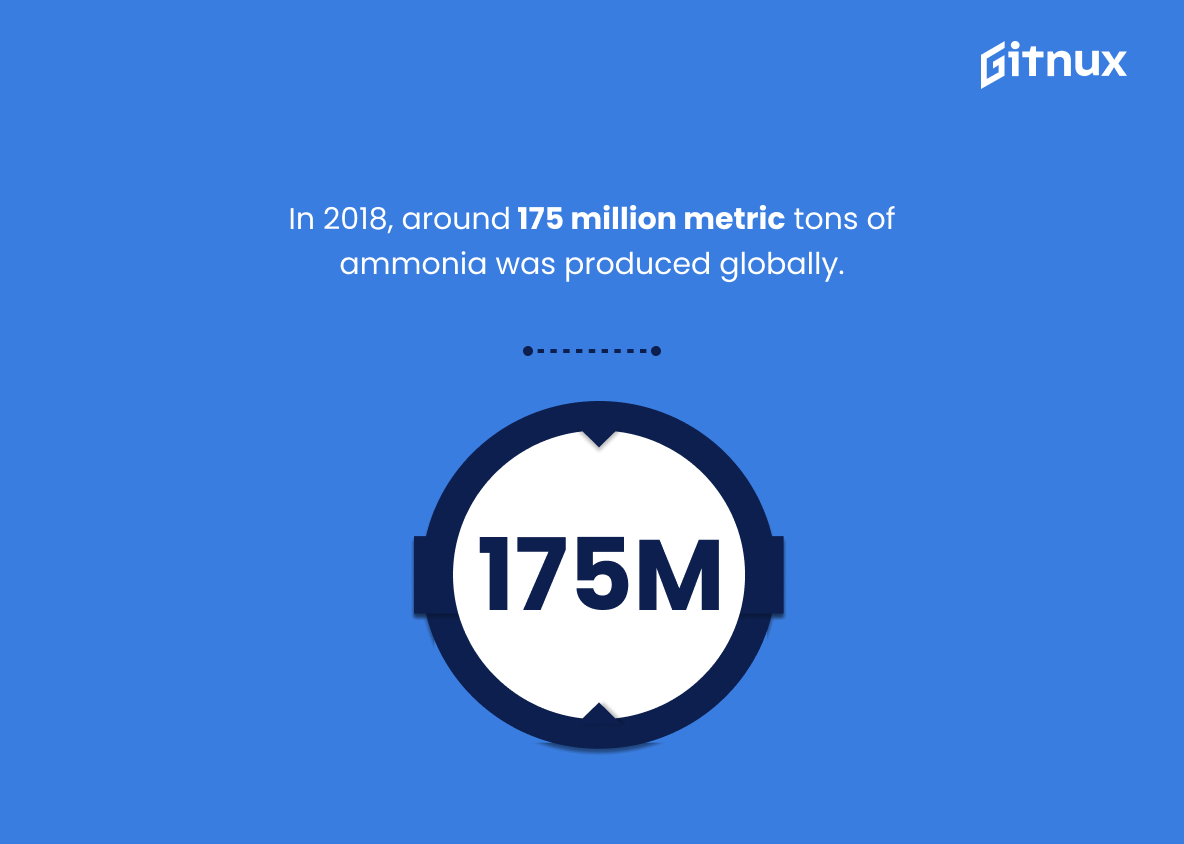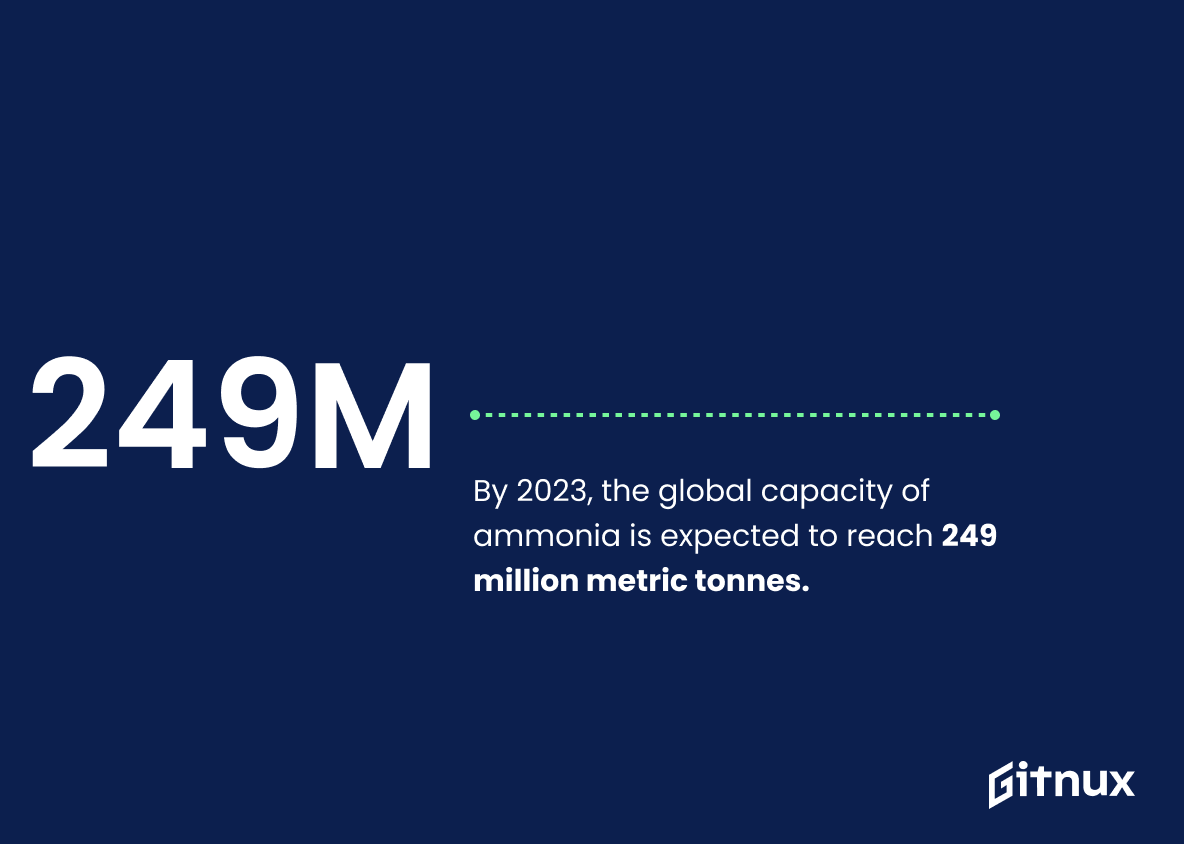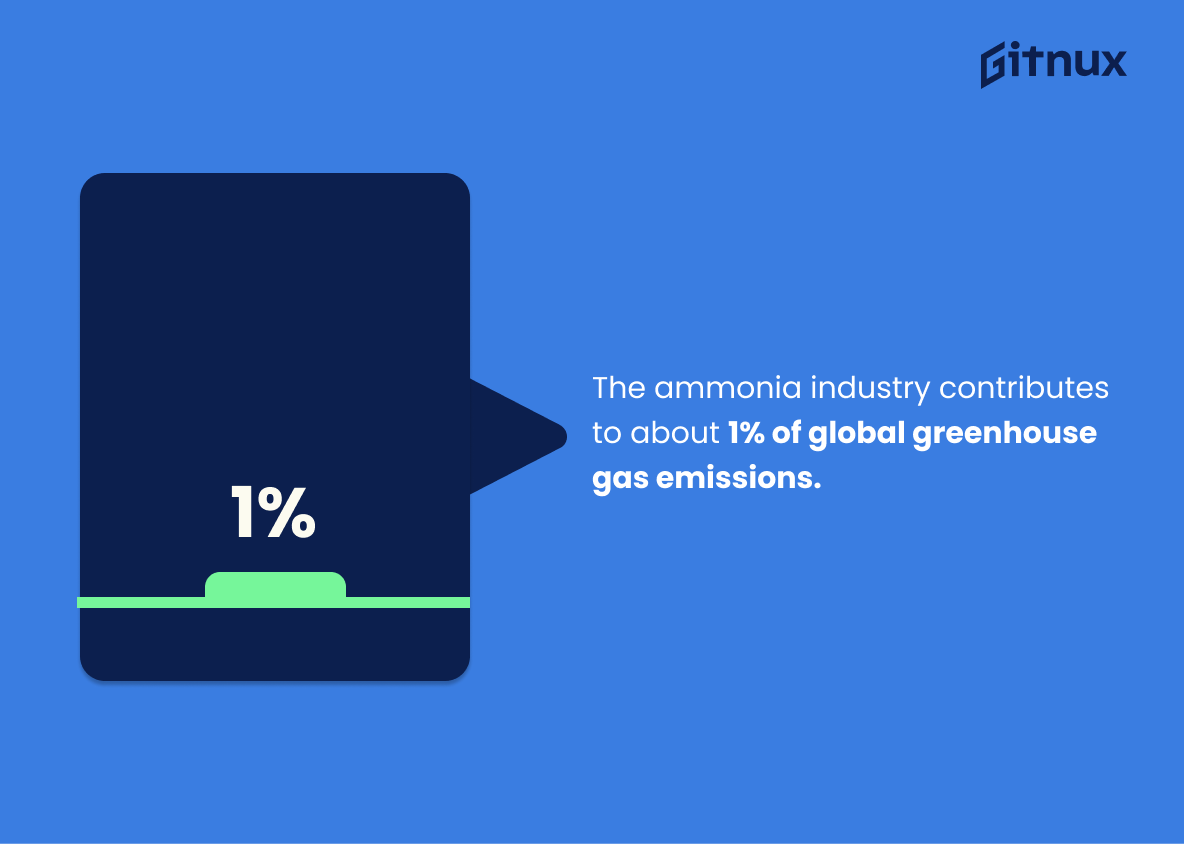Navigating the complexities of the global Ammonia industry can seem like an insurmountable task without the aid of reliable and comprehensive data. In our rapidly evolving industrial landscape, having a keen grasp on crucial industry statistics is not just an asset, but a necessity. Whether you’re a seasoned industry player, a budding entrepreneur, or an intrigued investor, understanding the nuances of the Ammonia industry is key to making informed decisions.
This blog post serves as your ultimate guide to the latest and most important Ammonia Industry Statistics. Exploring everything from production volumes to market trends, and from regional insights to potential growth forecasts, this post is designed to provide you with an accurate and in-depth understanding of the Ammonia industry’s current landscape and its foreseeable future.
The Latest Ammonia Industry Statistics Unveiled
By 2025, the global market size for ammonia is projected to reach around 76.64 billion US dollars.
As we construct a panoramic view of the ammonia industry, let’s breathe life into the numbers: Envision the global market of ammonia swelling to an astounding 76.64 billion US dollars by 2025. This projection isn’t merely white noise, but an economic fanfare that speaks volumes about the burgeoning demand and robust growth that is set to catapult the industry into an unprecedented era of prosperity.
The vitality of this projection lies not just in its sheer magnitude but also in its illumination of the dynamic trajectory the ammonia industry is following. Consider it as a compass navigating the turbulent tides of the global economy, giving industry stakeholders invaluable insight to adapt strategies, optimize production, and potentially expand market penetration.
Furthermore, this statistic resonates beyond the ammonia industry. Set to soar to new heights, the ammonia market is indicative of evolving global trends, such as the demand for fertilizers, renewable energy sources, and industrial chemicals. Thus, it paints a broader picture for policymakers, economists, environmentalists, and societal observers. It’s their high-pitched whistle, calling attention to an industry that’s not just surviving, but thriving.
This, in essence, is our crystal ball – the 76.64 billion US dollar projection. With it, we probe unknown territory, foresee challenges, hone strategies, and kickstart transformative dialogues – a world shaped by the twin forces of vision and data, like this statistic.
The agricultural sector is expected to witness a consumption growth rate of 1.9% from 2020 to 2027.
Running the wheels of the Ammonia industry, such statistic poses a significant impact. Charting a trajectory of the consumption growth rate at 1.9% in the agriculture sector from 2020-2027 brings to the surface compelling dynamics of market demand. This forecast engenders potential potentials and challenges for the Ammonia industry. Given the pivotal role of Ammonia as a key nitrogen source in fertilizers, this uptick sets the stage for an expanded market for Ammonia products.
The industry can, therefore, strategize and configure production schedules to anticipate this growth, align with market movements, and capitalize on this growth momentum. The forecast underscores an imperative for the industry to galvanize its resources for an expected increase in demand, therefore, contributing to the unfolding narrative of the Ammonia industry.
As of 2018, Asia Pacific had the highest market share for ammonia at 55.6%.
Highlighting the dominance of the Asia Pacific region in the ammonia market, capturing a substantial 55.6% share as of 2018, provides a tremendous insight. It signifies where the power center of the ammonia industry lies, attributing to its strong industrial growth and booming agricultural sector, both significantly relying on ammonia.
This figure not only underscores potential market opportunities in this region but also points towards global trends, thereby aiding industrialists and investors in strategic decision making. This heavy concentration also raises questions about market health, competition, and dependencies, making it a springboard for deeper investigation.
India, China, and the U.S were the top consumers of ammonia in the world as of 2017.
Spotlighting the trio of India, China, and the U.S as leading ammonia consumers in 2017 presents a veritable landscape of the global ammonia industry. In diving into these patterns, we unearth critical insights into regional demand, the extent of ammonia application, and shaping factors such as agricultural reliance or industrial growth.
Furthermore, acknowledging these high-consuming nations conjures a vivid global picture, picking out potential patterns and trends, and underlining the significance of the ammonia trade in creating a comprehensive, clear-cut understanding of the ammonia industry.
During the period 2020-2023, the global ammonia market is projected to grow by 2.26% in terms of capacity.
When envisaging the trajectory of the global ammonia market, the astoundingly positive projection that capacity should burgeeeee in the vicinity of 2.26% from 2020 to 2023 cannot be easily dismissed. This forward momentum flows directly into the heart of any discussion surrounding ammonia industry statistics, bolstering the affirmation of its vivid growth pattern.
It serves as a beacon, highlighting not only the industry’s present state but also casting a well-defined shadow on its future potential, diligently guiding investors, researchers, and policy makers alike in their quest to understand and capitalize on this buoyant industry trend.
The annual global production of ammonia was estimated to be 198 million tonnes in 2018.
The depth and substance of this statistic sheds light on the monumental scale of the ammonia industry on a global perspective. Notably, the astounding figure of 198 million tonnes produced in 2018 alone signifies the industry’s enormous integration into the world economy and its pivotal role in various sectors, such as agriculture, pharmaceuticals, and refrigeration.
It further underlines the critical demand for ammonia and gives us a sense of its indispensability. In essence, this fact doesn’t just represent a number, but rather illuminates the vitality, magnitude, and the vast realms the ammonia industry permeates.
In 2017, the fertilizer industry accounted for more than 75% of global ammonia demand.
Highlighting that in 2017, more than three-quarters of worldwide ammonia demand stemmed directly from the fertilizer industry, underscores the monumental role this sector plays in shaping the global ammonia industry. It allows readers to appreciate the weight that the fertilizer industry holds, essentially steering trends, influencing production, and directing strategies within the larger ammonia marketplace.
In essence, understanding this statistical reality gives one a critical focal point in navigating the extensive landscape of ammonia industry data, making it a linchpin fact in any dialogue or analysis of ammonia industry statistics.
In 2020, China led the global ammonia production capacity with nearly 50% share.
The torch bearer of the worldwide ammonia production capacity in 2020 was China, commanding nearly half of the global market. Such a significant piece of data underscores China’s dominating presence in the ammonia industry. This paints a vivid picture of the global landscape shaping the ammonia industry, illuminating the profound influence and control China exerts over it.
Additionally, knowing this statistic allows businesses, governments, and investors to make informed decisions and strategies related to the industry, ranging from navigating trade discussions to identifying potential opportunities for market expansion or diversification.
As of 2020, Africa was expected to add 12.6% of the global new-build ammonia capacity through 2025.
Diving into the heart of the explosive ammonia industry, one cannot overlook the projections for Africa. As the calendar flipped to 2020, it was foreseen that Africa will infuse approximately 12.6% of the worldwide new-build ammonia capacity through 2025. This figure puts the continent on track to become a significant contributor to the industry’s global growth. Picture Africa not just as a participant, but as a powerful player steering toward industrial development and economy diversification.
With this potential boost in production capacity, Africa’s role could trigger shifts in global ammonia supply chains, seizing the lenses of investors, industry analysts, and policy-makers worldwide into the continent’s burgeoning ammonia industry. Hence, the unravelling potential of Africa’s contribution enriches our comprehension of the ammonia industry’s dynamic narrative.
In 2018, around 175 million metric tons of ammonia was produced globally.
Unveiling the astonishing scale of the global ammonia production, the staggering figure of approximately 175 million metric tons in 2018 provides a vivid illustration of the industry’s vastness. It serves as a tangible testament to both its industrial importance across multiple sectors such as agriculture, cleaning supplies, pharmaceuticals, and more, as well as reflecting upon the economic value generated by this chemical compound.
Just as a magnifying glass brings tiny details into focus, this statistic amplifies the sheer magnitude of the ammonia industry on the global stage, highlighting its significant role and potential for influencing strategies for economic growth, sustainability, and innovation.
In 2020, the global ammonia market contracted by 1% due to the COVID-19 pandemic.
Peeling back the layers of the 2020 global ammonia market tells us an intriguing story of resilience, underscored by a mild contraction of just 1%. The invisible hand of the COVID-19 pandemic left its mark nearly everywhere, including the ammonia industry, yet the industry showed a mark of robustness. The minor contraction provides valuable context to the post, enabling readers to appreciate the impact of global crises on industry growth, stability, and demand patterns.
Beyond surface-level figures, it implies the critical role of ammonia as a staple in several sectors, which retained demand in a challenging year. It paints a picture of an industry affected, yet not flattened, setting an anticipatory tone for the discussion of recovery strategies and future projections.
By 2030, the global ammonia market is expected to reach 230 million tonnes.
In the vast universe of the Ammonia Industry, this forecasted growth to a whopping 230 million tonnes by 2030 sends a powerful signal. It crafts the narrative of a sector striding forward with undeniable significance, casting a mighty shadow over economic landscapes. By serving as a gauging meter, it hints at the industry’s swelling pace, showcasing the potential it holds for investors, stakeholders, and market players.
It emphasizes the intense upswing in demand, bringing into focus the urgent need for advancing production technologies and efficient supply chains. This statistic isn’t just a number, it’s a beacon that illuminates the path, guiding strategic planning and decision-making in the ammonia industry’s future-reaching trajectory.
By 2023, the global capacity of ammonia is expected to reach 249 million metric tonnes.
Forecasting an exciting surge to 249 million metric tonnes in global capacity by 2023, this assertion paints a vibrant picture of the imminent growth and potential for the ammonia industry. This commanding increase is not just a number—it signifies abundant opportunities for new investments, robust trade, and cutting-edge innovations across the global ammonia market landscape.
As such, it acts as a vital compass for stakeholders, guiding their strategies towards fertile arenas and informing them of potential market dynamics. Ultimately, this impressive projected growth serves as a beacon of prosperity, illuminating the future of the ammonia industry with promising radiance.
The ammonia industry contributes to about 1% of global greenhouse gas emissions.
Within the intricate web of Ammonia Industry Statistics lies a striking symphony of numbers, one of which reverberates with significant meaning – namely that the ammonia industry is responsible for approximately 1% of global greenhouse gas emissions. Painted against the stark canvas of eco-responsibility, this datum drives home the reality of this industry’s contribution to an intensifying global crisis. It compels us to scrutinize not only the economic and production aspects of the sector but also the environmental, thus demanding a more comprehensive evaluation and understanding of the industry’s performance.
This percentage, although seemingly small, has weighty implications, and forms a crucial thread in the tapestry of data on this industry, solidifying the narrative of connecting industry growth with ethical responsibility. Drawing focus on this data point can inspire players in the ammonia industry to reform their practices and lessen their environmental impact, thereby reshaping industry trends and guiding future developments.
As of 2018, Yara International was the largest producer of ammonia, with an annual production of over 7.8 million tonnes.
Under the spotlight of Ammonia Industry Statistics, one cannot shrug off the indomitable presence and influence of Yara International. The behemoth took the lead, clinching the title of the largest producer of ammonia in 2018.
Producing over 7.8 million tonnes in one year alone, Yara International’s monumental contribution has reshaped the landscapes and trajectories of the ammonia industry. This key figure is the company’s testament to its capacity and dominance in the market, while also indicating the scale at which the global demand for ammonia operates.
In 2019, Middle East and Africa together accounted for over 18% of the global ammonia market share by volume.
Scrutinizing 2019’s global market dynamics, an intriguing highlight was the Middle East and Africa’s significant contribution to the worldwide ammonia industry. Accounting for over 18% by volume, the regions were key players in driving the ebb and flow of the global ammonia market.
Their contribution symbolizes not only their market potentials but also indirectly influences the global pricing strategy, innovation, and growth dynamics in the industry. This substantive percentage serves as a clear indicator of international expansion prospects, regional market dynamics, and potentially untapped markets for investors, stakeholders, and entrepreneurs navigating the ammonia industry landscape.
The global ammonia market size was valued at USD 48.65 billion in 2016.
Delving into the imposing figure of USD 48.65 billion, which the global ammonia market was valued at in 2016, provides a wealth of insight into the magnitude and significance of the ammonia industry. This staggering statistic not only anchors the economic importance of the industry, but also hints at the intense global demand for ammonia.
Given the sheer scale reflected in this multi-billion dollar market valuation, it becomes evident that the ammonia industry plays a critical, textured role within both the global economy and the array of industries it serves. Moreover, this figure sets a meaningful baseline for any longitudinal analysis of trends and market fluctuations, making it an indispensable tool in grasping the broader dynamics of the ammonia industry.
In 2018, the production of ammonia in the United States amounted to approximately 14 million metric tons.
The 2018 statistic, reflecting a production volume of approximately 14 million metric tons of ammonia in the United States, presents a compelling snapshot of the dynamic and robust nature of the ammonia industry. Highlighting this numerical illustration offers a passageway into the vast and thriving market, giving the readers an opportunity to comprehend the magnitude of this industry.
Further, it offers a starting point for tracking and forecasting industrial trends, profitability, environmental impacts, and even influencing governmental policy. So, in essence, this figure acts as a cornerstone, engineering an understanding of the economic, environmental, and protocol-related aspects of the ammonia industry, offering the potential to shape the future direction of this field.
Conclusion
In sum, the ammonia industry is a critical player in the global economy, particularly within the agriculture and refrigeration sectors. Industry statistics reveal a steady growth trajectory, even amidst challenging economic times. The industry’s adaptive strategies, research advancements, and increasing demand for sustainable alternatives, largely contribute to its promising future.
Understanding these statistics and trends not only provides valuable insights for stakeholders within the ammonia industry but can also inform broader strategic planning for related industries and sectors. As the world continues to grapple with important environmental challenges, the role of the ammonia industry in providing eco-efficient solutions will undoubtedly become even more significant.
References
0. – https://www.www.futuremarketinsights.com
1. – https://www.www.transparencymarketresearch.com
2. – https://www.theconversation.com
3. – https://www.www.worldfertilizer.com
4. – https://www.www.prnewswire.com
5. – https://www.ihsmarkit.com
6. – https://www.www.businesswire.com
7. – https://www.www.norwayexports.no
8. – https://www.chemweek.com
9. – https://www.www.grandviewresearch.com
10. – https://www.www.futurebridge.com
11. – https://www.www.statista.com
12. – https://www.www.globenewswire.com

